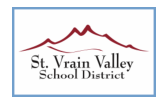Starting STEM Early
From Rick McMaster
 I recently had the opportunity to attend STEM Solutions. There were a number of themes and actions discussed throughout the panels and keynotes, but one in particular is rising to the top: we need to start early I recently had the opportunity to attend STEM Solutions. There were a number of themes and actions discussed throughout the panels and keynotes, but one in particular is rising to the top: we need to start early  with STEM. Not that long ago we focused on high school students. Then we engaged middle school students, especially young women who were losing interest in math and science. But now we understand that even younger minds need to experience these topics directly. The results can be amazing. with STEM. Not that long ago we focused on high school students. Then we engaged middle school students, especially young women who were losing interest in math and science. But now we understand that even younger minds need to experience these topics directly. The results can be amazing.
When my daughter was two years old (she’s college age now), I got started with informal education. I visited elementary and middle school classrooms but I also went to my daughter’s preschool with kites, juggling balls, and circus peanuts. The kids had great ideas about how to make kites fly higher and longer and why some balls bounce better than others and they built some great devices to launch circus peanuts.
 Last summer, the St. Vrain Valley School District started a partnership with IBM/Boulder called Camp Innovation for a Smarter Planet. They planned it for grades 1 to 3. The program was half-days for two weeks. The young campers worked directly with IBM employees at the Boulder facility, along with SVVSD educators and high school volunteers on projects related to five Smarter Planet subject areas: water, energy, cities/building, transportation and food. Experts from IBM and the community hosted hands-on, interactive sessions. At the end of the two weeks, the campers’ project exhibitions were shared with community audiences. You can see its great success by viewing the videos. Last summer, the St. Vrain Valley School District started a partnership with IBM/Boulder called Camp Innovation for a Smarter Planet. They planned it for grades 1 to 3. The program was half-days for two weeks. The young campers worked directly with IBM employees at the Boulder facility, along with SVVSD educators and high school volunteers on projects related to five Smarter Planet subject areas: water, energy, cities/building, transportation and food. Experts from IBM and the community hosted hands-on, interactive sessions. At the end of the two weeks, the campers’ project exhibitions were shared with community audiences. You can see its great success by viewing the videos.
 This summer, St. Vrain Valley and IBM expanded this one-of-a-kind summer program into Innovation Academy for a Smarter Planet. There was still a two week session for first to third graders – some of whom were back for a second year - but there was another session for sixth and seventh graders. Students spent the first week of each session at IBM’s Boulder facility and the second week at Skyline High School, taking “field trips” to the IBM Green Data Center, Command Center, Executive Briefing Center, Water Treatment Plant and more. This summer, St. Vrain Valley and IBM expanded this one-of-a-kind summer program into Innovation Academy for a Smarter Planet. There was still a two week session for first to third graders – some of whom were back for a second year - but there was another session for sixth and seventh graders. Students spent the first week of each session at IBM’s Boulder facility and the second week at Skyline High School, taking “field trips” to the IBM Green Data Center, Command Center, Executive Briefing Center, Water Treatment Plant and more.
How did they challenge these students? They just gave them a list of questions and stood back. Here’s an example of the Smarter Buildings challenges for the elementary school students this year.
- Design a new purpose for a vacant building that would benefit the community.
- How might we help create the perfect classroom/school that meets the needs and wants of kids & the environment?
- How might we help kids have bedrooms that support their needs and wants in an environmentally-friendly way?
- Design a process for the repurposing of as many physical pieces of Twin Peaks Mall as possible in preparation for its demolition and/or decommissioning.
If you want to see more of Innovation Academy, visit their blog. It’s a great program.
Next month, we’ll be back to school, and I’ll talk about some inquiry and project based learning for K-12.
As always, your comments are welcome, @drkold.
Rick McMaster is the STEM Advocate at IBM’s University Programs Worldwide.
Back to newsletter |